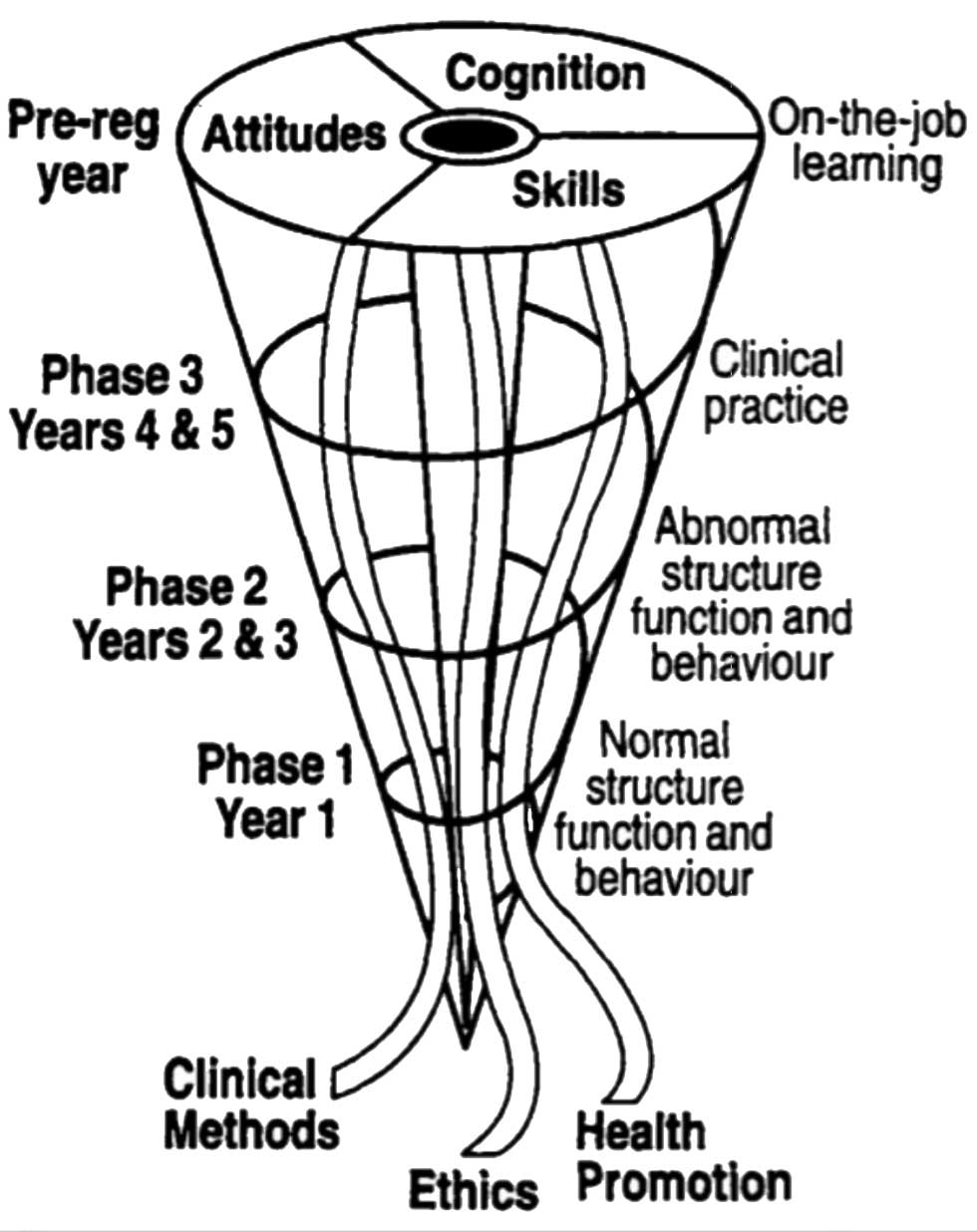What is meant by integration
The Integrated Curriculum is defined as the dosage of the contents that are taught along the programs of study of Medicine in a multidisciplinary way and in synchrony between the basic and clinical subjects.
Since 1980, it has been a trend among the main medical schools around the world Schools . It is based on a series of teaching methodologies oriented to offer student a contextualized and coherent learning, so that they understand the meaning and relevance of the concepts they are studying:
-
During the first years, it is often difficult to connect the depth of Basic Sciences with clinical scenarios, since students are unaware of the scope of the subjects they are taking. The Integrated Curriculum favors learning by linking basic science content to clinical problems, often through cases.
-
In addition, learning is most effective when the structuring of knowledge matches the way it will be applied. Thus, the connection between different subjects can enhance long-term learning and facilitate deeper understanding.
-
In this way, a better transfer of knowledge is possible as the student progresses through their programs of study. Familiarization with clinical cases can help students to constantly identify aspects of the different Basic Sciences, so that they tend to internalize and apply them as they progress in their programs of study
Different integration models
Horizontal integration is defined as the relationship of several subjects within a specific period of time. What was previously taught in parallel is now taught in a coordinated manner, thus avoiding repetition of content, redundancies or discrepancies.
This relationship is possible in subjects such as Anatomy and Physiology or Biochemistry and Immunology, so that, at the same time, students study them applied, for example, to the same organ such as the heart. In this way, a much more complete and coherent vision is generated, which facilitates learning.
Vertical integration, on the other hand, involves a curricular relationship in subjects that are distant in time. In this way, the traditional barrier between basic and clinical subjects is eliminated. Thus, a 'Z' shaped model of Study program is extended: the student starts with a greater load in basic subjects, although not in their totality, so that the proportion is reversed as the courses progress, to end up with a majority of clinical subjects.
The combination of both models, horizontal and vertical, is known as spiral integration and occurs over time and across different subjects. It enables an increasingly mature understanding, so that the student delves deeper into more complex knowledge of the subjects studied at the beginning. In this way, subjects are reinforced through a natural process that moves from the simple to the complex and breaks down the barriers and boundaries that have traditionally grown between courses, subjects and teachers and Departments.
From traditional expository teaching to active learning
Professor Eric Mazur, professor of physics at Harvard University, recounts his transformation from traditional expository teaching to active learning: traditional teaching does not make students understand physics, they only learn to solve subject problems to approve the exam. However, active learning and peer instruction help students understand physics better, and learn to apply and transfer it to new situations.

model integrated spiral curriculum at the University of Dundee, UK. It illustrates a spiral Study program in which core and clinical subjects are linked progressively. At the top of the cone are represented the three learning domains: knowledge, skills and attitudes, which are a constant at all levels of the spiral. In addition, topics such as clinical methodologies, ethics or health promotion persist throughout all courses.
